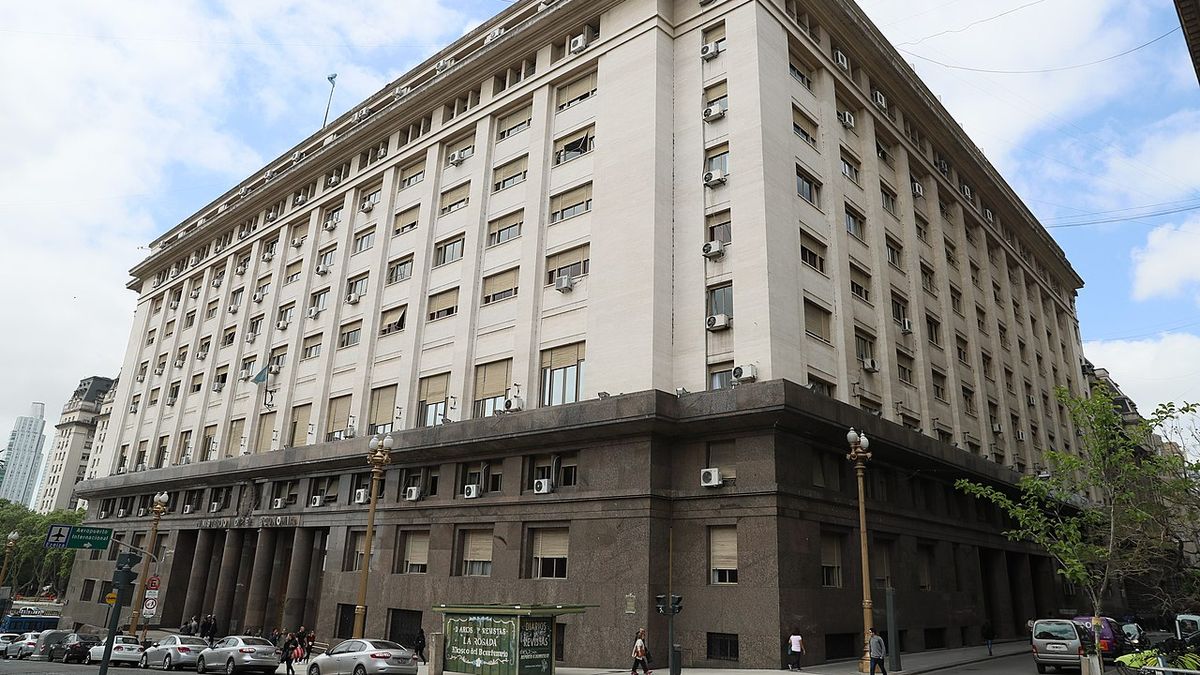After an extensive account of what was, until now, the public sector financing strategy, The outline of what the 2025 Budget will look like shows tight-fisted hints, between the lines, of how the Government will be financed next year. But more than anything he emphasizes what has been done since he took office.or Javier Milei, the why and the results up to the end of last May.
The financing strategy that the Government adhered to was designed based on the legacy restrictions: a deteriorated balance sheet of the Central Bank (BCRA), a peso curve supported by puts (purchase options on Treasury bonds), and banks near the Treasury risk exposure limit.
Economics explains that defined the fiscal and monetary anchor, given the fiscal surplus generated since January and the fall in real rates against improved expectationsmanaged to obtain net financing at negative real rates and lower than the expected medium and long-term growth.
It was thus that given the expectation of a drop in nominal interest rates and under the Negative real rate scenario to 2028 on the CER curveplaced securities indexed to “zero coupon” inflation in 2025, 2026, 2027 and 2028. With the net financing of these auctions, they bought back Treasury bonds held by the BCRA to clean up its balance sheet and reduce the Treasury’s interest burden. They then made a debt swap to clear almost all of the public sector’s debt maturities and approximately 18% of the private sector’s debts operating this year.
Regarding the hackneyed topic of remunerated debt of the BCRAhand in hand with the fall in interest rates and inflation, they were able, through the placement of short-term fixed-rate Lecaps in pesos, to lower the stock of Passive Repo of the BCRA and with it the endogenous issuance for interest, which went from 8% of the broad monetary base in November 2023 to 1.7% today, thus reducing the quasi-fiscal deficit.
The message sent to Congress highlights that, with part of the peso cushion built with the positive net financing of $24 billion, The Treasury will buy dollars from the BCRA to meet foreign currency maturities, rejecting the issuance of non-transferable bills.
In the first half of the administration, the fiscal surplus and the financing strategy led to a contractionary monetary effect of the Treasury on the broad monetary base of around $24.5 billion, equivalent to 4% of GDP.
In this regard, the report states that With the fiscal balance anchor, the Treasury no longer has the need to finance current expenditure, and understanding that the period of negative real interest rates is over, they will continue with the strategy of extending the maturity profile, limiting the financial burden on Treasury accounts.
Regarding financing from international credit organizations (IO), which in 2023 remained stable, reaching disbursements of US$5,657 million and achieving positive net flows of US$604 million, The report states that operations with the OI were oriented with a focus on macroeconomic stability, anchoring inflationary expectations through fiscal balance but protecting the most vulnerable populations.
Thus, the financing portfolios with the IOs were redirected towards the new priorities: Strengthen priority sectors with high social returns, such as literacy, employment, child protection and food policy, with rapid disbursement operations.
This year, The projects in progress faced their account balances against the budgetary space assigned to them by the initial extended budget of the same year.and even worked with the International Monetary Fund and the rest of the multilateral credit organizations on different instruments to achieve net flows.
Financing: What will be the Treasury’s strategy in 2025?
By 2025, The objective is to optimize the portfolio of operations with international financing, in line with the proposed guidelines of fiscal prudence; To this end, progress will continue towards the identification and management of credit operations that support the social protection strategy for vulnerable populations and contribute to consolidating macroeconomic stability and increasing the levels of effectiveness and efficiency of public policies.
They also promise that innovation will be encouraged in the search for better medium and long-term financial tools that accompany the economic and sustainable development of the country; and the optimization of credit quotas with international organizations, promoting the co-financing of operations that, among other priorities, support social protection programs through direct transfers, promote the efficient use of energy and increase the export capacity of its productive matrix.
Specifically, they point out that a number will be givenNew approach to information building initiatives available to achieve greater effectiveness in the stages of identification, prioritization, monitoring of execution and accountability of projects. An improvement in the systematization of information from audited financial statements will be implemented, and it is expected that this intelligence will contribute to the design of effective operations and agile and transparent execution.
“We will work to ensure that financial flows with the international organizations are again positive, “so that loan disbursements contribute to good performance of the external sector, also ensuring the fluidity of international financing in key projects for the social and productive development of the country.”
In terms of bilateral financing, ties with governments and financial institutions will continue to be deepened, directing financing towards priority productive investment, infrastructure and equipment projects for the country. New lines of financing will be sought to be developed with institutions with which Argentina has yet to develop specific joint work actions.
During the period 2025-2027, capital contributions and pledges will continue to be made to multilateral credit organizations and related institutions, of which the Nation is a member, such as the Inter-American Development Bank (IDB), the International Bank for Reconstruction and Development (IBRD), the Andean Development Corporation (CAF), the Central American Bank for Economic Integration (CABEI), the International Fund for Agricultural Development (IFAD), the African Development Bank (ADB) and the Group of 24 (G24).
Source: Ambito
I am a 24-year-old writer and journalist who has been working in the news industry for the past two years. I write primarily about market news, so if you’re looking for insights into what’s going on in the stock market or economic indicators, you’ve come to the right place. I also dabble in writing articles on lifestyle trends and pop culture news.




